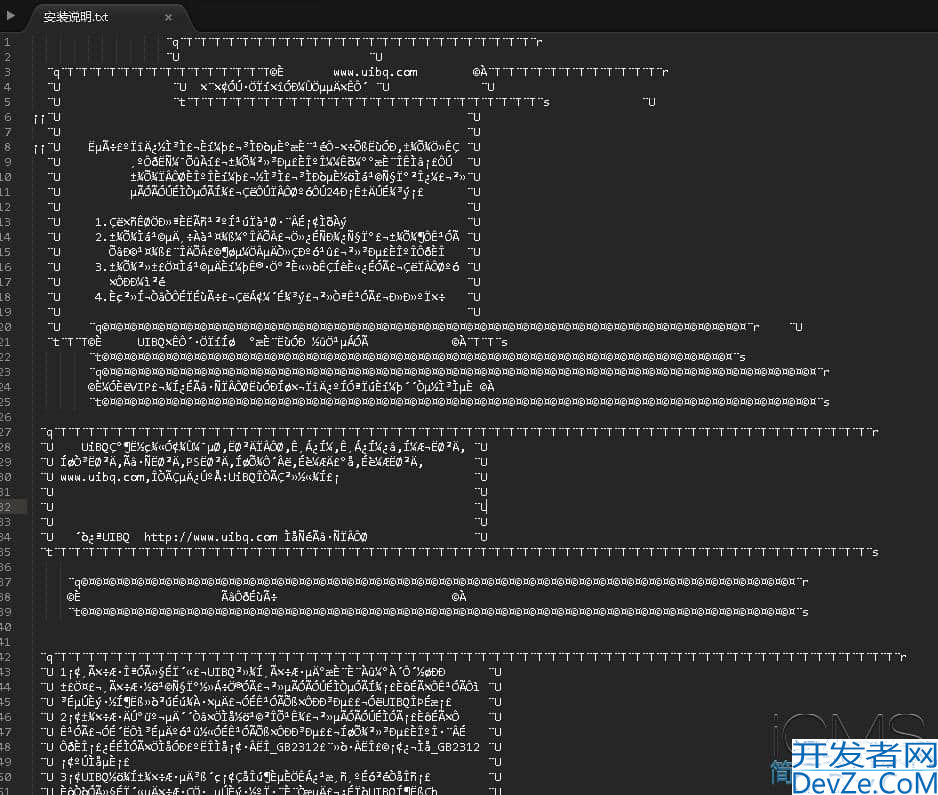Java使用MethodHandle来替代反射,提高性能问题
目录
- 一、认识MethodHandle
- 1、简介
- 2、使用方式
- 3、与反射的区别
- 二、示例
- 1、基本使用
- 2、(重要)提升性能的关键
- 3、实际使用
- 三、源码分析
- 1、创建Lookup
- 2、MethodType
- 3、创建MethodHandle
- 4、MethodHandle中的方法
- 总结
一、认识MethodHandle
1、简介
Java从最初发布时就支持反射,通过反射可以在运行时获取类型信息,但其有个缺点就是执行速度较慢。
于是从Java 7开始提供了另一套API MethodHandle 。其与反射的作用类似,可以在运行时访问类型信息,但是其执行效率比反射更高(性能几乎接近方法调用)
MethodHandle:是java.lang.invoke.MethodHandle的一个实例,它是对Java中某个方法(包括实例方法、静态方法、构造函数等)的直接可执行引用。
- 与传统的Java反射相比,MethodHandle更加轻量级和高效,因为它绕过了许多反射的额外开销,如访问控制检查等。
- MethodHandle是对方法的直接引用,可以直接通过MethodHandle对象调用目标方法,无需像反射那样先获取Method对象。
- MethodHandle具有类型检查的特性,在编译时会检查MethodHandle的类型与目标方法的类型是否匹配。
2、使用方式
1、创建MethodHandle对象:
- 使用
MethodHandles.Lookup类的lookup()方法获取一个MethodHandles.Lookup对象。 - 使用
MethodHandles.Lookup对象的findStatic(), findVirtual(), findSpecial(), findConstructor()等方法来查找并获取目标方法的MethodHandle对象。
2、绑定MethodHandle到目标方法(如果需要):
- 如果
MethodHandle指向的是实例方法,可以使用MethodHandle对象的bindTo()方法将其绑定到目标实例上。
3、调用目标方法:
- 使用
MethodHandle对象的invoke()、invokeExact()、invokeWithArguments()等方法来调用目标方法。
3、与反射的区别
- 性能:MethodHandle通常比反射更快,因为它绕过了许多反射的额外开销。
- 类型安全:MethodHandle在编译时会进行类型检查,而反射在运行时进行类型检查,可能导致ClassCastException等异常。
- 用法:反射需要先获取Method对象,而MethodHandle直接对方法进行引用。
Method Handles比反射更难用,因为没有列举类中成员,获取属性访问标志之类的机制。
二、示例
1、基本使用
import java.lang.invoke.MethodHandle;
import java.lang.invoke.MethodHandles;
import java.lang.invoke.MethodType;
class Calculator {
public String add(int a, int b) {
return String.valueOf(a + b);
}
}
public class MethodHandleExample {
public static void main(String[] args) throws Throwable {
try {
// 获取Calculator类的方法句柄
// 注意:由于我们是在Class内部查找,所以可以使用MethodHandles.lookup()
// 在实际应用中,如果Class是其他包中的类,你可能需要不同的Lookup实例
MethodHandles.Lookup lookup = MethodHandles.lookup();
// 获取方法,第一个参数为返回值,剩余的参数为方法参数
MethodType methodType = MethodType.methodType(String.class, int.class, int.class);
// 通过方法名 查找某个类的某个方法
MethodHandle addHandle = lookup.findVirtual(Calculator.class, "add", methodType);
// 创建Calculator的实例
Calculator calculator = new Calculator();
// 直接调用方法,第一个参数为对象实例,剩余的参数为方法
String result = (String) addHandle.invoke(calculator, 1, 2);
System.out.println(result);
} catch (NoSuchMethodException | IllegalAcwww.devze.comcessException e) {
throw new RuntimeException(e);
}
}
}
2、(重要)提升性能的关键
使用MethodHandle来提升性能,一般是定义static final在启动时就加载好了,这样不用在运行时重新查找。
import java.lang.invoke.MethodHandle;
import java.lang.invoke.MethodHandles;
import java.lang.invoke.MethodType;
class Calculator {
public int add(int a, int b) {
return a + b;
}
}
public class MethodHandleExample {
// 要static final类型的才能提升效率
private static final MethodHandle ADD_HANDLE;
static {
// static final 修饰的 MethodHandle 可以在类加载时就完成初始化,避免了每次调用时的查找开销。
try {
MethodHandles.Lookup lookup = MethodHandles.lookup();
MethodType methodType = MethodType.methodType(int.class, int.class, int.class);
ADD_HANDLE = lookup.findVirtual(Calculator.class, "add", methodType);
} catch (NoSuchMethodException | IllegalAccessException e) {
throw new RuntimeException(e);
}
}
public static void main(String[] args) throws Throwable {
Calculator calculator = new Calculator();
int result = (int) ADD_HANDLE.invoke(calculator, 1, 2);
System.out.println(result);
}
}
3、实际使用
//无参数构造器
MethodType con1Mt = MethodType.methodType(void.class);
MethodHandle con1Mh = lookup.findConstructor(HandleTarget.class, con1Mt);
Object target1 = con1Mh.invoke();
//有参数构造器
MethodType con2Mt = MethodType.methodType(void.class, String.class);
MethodHandle con2Mh = lookup.findConstructor(HandleTarget.class, con2Mt);
Object target2 = con2Mh.invoke("ErGouWang");
//调用非private实例方法
MethodType getterMt = MethodType.methodType(String.class);
MethodHandle getterMh = lookup.findVirtual(HandleTarget.class, "getName", getterMt);
String name = (String) getterMh.invoke(target2);
System.out.println(name);
//访问private方法
Method learnMethod = HandleTarget.class.getDeclaredMethod("learnPrograming", Stringphp.class);
learnMethod.setAccessible(true);
MethodHandle learnProMh = lookup.unreflect(learnMethod);
learnProMh.invoke(target1, "Java");
//访问非private属性
MethodHandle nameMh= lookup.findGetter(HandleTarget.class,"name", String.class);
System.out.println((String) nameMh.invoke(con1Mh.invoke()));
//访问private的属性,需要借助反射
Field nameField = HandleTarget.class.getDeclaredField("name");
nameField.setAccessible(true);
MethodHandle nameFromRefMh = lookup.unreflectGetter(nameField);
System.out.println((String) nameFromRefMh.invoke(target1));
//访问private的属性,需要借助反射
Field nameField = HandleTarget.class.getDeclaredField("name");
nameField.setAccessible(true);
MethodHandle nameFromRefMh = lookup.unreflectGetter(nameField);
System.out.println((String) nameFromRefMh.invoke(target1));
三、源码分析
1、创建Lookup
// 以这种方式得到的lookup很强大,凡是调用类支持的字节码操作,它都支持 MethodHandles.Lookup lookup = MethodHandles.lookup(); // 以此种方式创建的lookup能力是受限的,其只能访问类中public的成员。 MethodHandles.Lookup publicLookup=MethodHandles.publicLookup();
2、MethodType
(1)创建MethodType
// MethodType使用其静态方法创建
// 获取方法,第一个参数为返回值,剩余的参数为方法参数
// 该类能够产生对方法的描述即 (Ljava/lang/Object;)V 该方法接收一个Object类型的值,没有返回值
// 其实该类就是用来对方法的描述,描述这个方法接受什么参数,返回什么类型的值
MethodType methodType(Class<?> rtype, Class<?> ptype0, Class<?>... ptypes)
MethodType genericMethodType(int objectArgCount, boolean finalArray)
MethodType fromMethodDescriptorString(String descriptor, ClassLoader loader)
想要获得MethodType对象,MethodType类提供了三个静态方法,如上所述。
// 第一个参数代表返回类型,如果没有则指定void.class即可,后面的参数都是这个方法接收的参数类型,可以有多个,也可以没有,MethodType.methodType()有多个重载方法
MethodType.methodType(Class<?>, Class<?>, Class<?>...)
// 生成一个MethodType,第一个参数表示要生成的参数个数,并且都是Object类型,第二个参数表示是否要在最后再添加一个Object类型的数组,注意是添加哦
MethodType genericMethodType(int objectArgCount, boolean finalArray)
// 从方法描述符来生成一个MethodType, 第二个参数为一个类加载器,如果为null则使用系统类加载器
MethodType fromMethodDescriptorString(String descriptor, Clashttp://www.devze.comsLoader loader)
// 生成一个 接受int、long和String类型的参数,返回一个String类型
MethodType.fromMethodDescriptorString("(IJLjava/lang/String;)Ljava/lang/String;", null);
(2)修改MethodType
获得一个具体MethodType实例后,我们可以对它进行一些修改,比如更改参数类型,添加一个参数,删除一个参数等等,但是由于MethodType本身是不可变的,所以每对其进行一次更改都会产生一个新的MethodType对象
// 在方法后面追加多个参数 MethodType appendParameterTypes(List<Class<?>> ptypesToInsert) // 在方法后买你追加一个参数 MethodType编程客栈 appendParameterTypes(Class<?>... ptypesToInsert) // 在指定参数位置插入一个参数 从 0开始 MethodType insertParameterTypes(int num, Class<?>... ptypesToInsert) // 在指定参数位置插入多个参数 从 0开始 MethodType insertParameterTypes(int num, List<Class<?>> ptypesToInsert) // 改变返回值类型 MethodType changeReturnType(Class<?> nrtype) // 改变指定参数位置的参数类型 MethodType changeParameterType(int num, Class<?> nptype) // 把基本类型变成对应的包装类型 (装箱) MethodType wrap() // 把包装类型变成对应的基本类型(拆箱) MethodType unwrap() // 把所有引用类型的参数变为Object类型 MethodType erase() // 把所有参数都变成Object类型 MethodType generic()
// 构造出一个 (int,long,String)String
MethodType methodType = MethodType.fromMethodDescriptorString("(IJLjava/lang/String;)Ljava/lang/String;", null);
// (double, long, String)String
methodType = methodType.changeParameterType(0, Double.TYPE);
// (double, long, String, Object)String
methodType = methodType.appendParameterTypes(Object.class);
// (boolean, double, long, String, Object)String
methodType = methodType.insertParameterTypes(0, Boolean.TYPE);
// (float, double, long, String, Object)String
methodType = methodType.changeParameterType(0, Float.TYPE);
// (float, double, long, String, Object)Object
methodType = methodType.changeReturnType(Object.class);
// (Float, Double, Long, String, Object)Object
methodType = methodType.wrap();
// (float, double, long, String, Object)Object
methodType = methodType.unwrap();
// (float, double, long, Object, Object)Object
methodType = methodType.erase();
// (Object, Object, Object, Object, Object)Object
methodType = methodType.generic();
List<Class<?>> classList = methodType.parameterList();
for (Class<?> clazz : classList) {
System.out.println(clazz.getName());
}
3、创建MethodHandle
(1)MethodHandle (方法句柄)
// 所有方法都会查找指定类中的指定方法,如果查找到了
// 则会返回这个方法的方法句柄
// 返回指定类的指定构造函数
public MethodHandle findConstructor(Class<?> refc,
MethodType type);
// 查找虚方法 final修饰的也可找到
// 可以简单理解为虚方法指的是可以被子类覆盖的方法
public MethodHandle findVirtual(Class<?> refc,
String name,
MethodType type);
// 通过反射获取方法句柄
public MethodHandle unreflect(Method m);
// 查找静态方法
public MethodHandle findStatic(Class<?> refc,
String name,
MethodType type);
// 查找某个字段,并生成get方法的方法句柄(类中不需要存在这个字段的get方法)
ublic MethodHandle findGetter(Class<?> refc,
String name,
Class<?> type)
// 查找某个字段,并生成set方法的方法句柄(类中不需要存在这个字段的set方法)
public MethodHandle findSetter(Class<?> refc,
编程 String name,
Class<?> type)
(2)MethodHandles中静态工厂方法创建通用的方法句柄
// 1、用来创建操作数组的方法句柄
//MethodHandle arrayElementGetter(Class<?> arrayClass)
//MethodHandle arrayElementSetter(Class<?> arrayClass)
int[] arr = new int[]{1, 2, 3, 4, 5, 6};
MethodHandle getter = MethodHandles.arrayElementGetter(int[].class);
MethodHandle setter = MethodHandles.arrayElementSetter(int[].class);
setter.bindTo(arr).invoke(2, 50);
System.out.println(getter.bindTo(arr).invoke(2));
System.out.println(Arrays.toString(arr));
// 2、MethodHandle identity(Class<?> type)
// 该方法总是返回你给定的值,即你传的参数是什么就返回什么
MethodHandle identity = MethodHandles.identity(String.class);
System.out.println(identity.invoke("hello world"));
// 3、MethodHandle constant(Class<?> type, Object value)
//与上面那个方法不同的是,该方法在创建方法句柄的时候就指定一个值,然后每次调用这个方法句柄的时候都会返回这个值
MethodHandle helloWorld = MethodHandles.constant(String.class, "hello world");
System.out.println(helloWorld.invoke());
// 4、MethodHandle dropArguments(MethodHandle target, int pos, Class<?>... valueTypes)
// 可以简单理解为在调用的时候忽略掉哪些位置上的参数
public static void main(String[] args) throws Throwable {
MethodHandles.Lookup lookup = MethodHandles.lookup();
MethodHandle methodHandle = lookup.findStatic(TestMain.class, "test", MethodType.methodType(int.class, int.class));
// 忽略第0个参数并且类型为int类型的参数
methodHandle = MethodHandles.dropArguments(methodHandle, 0, int.class);
// 实际传递的只有3
methodHandle.invoke(2, 3);
}
public static int test(int i) {
System.out.println(i);
return 3;
}
// 5、MethodHandle filterArguments(MethodHandle target, int pos, MethodHandle... filters)
// 可以在方法调用的时候对参数进行处理
// 下面这个例子,test方法接收的是一个int类型的参数,但是我们传递的是一个字符串。因此我们把参数进行了一个处理 test = MethodHandles.filterArguments(test, 0, length);这行代码就是表示,test方法句柄调用的时候调用length方法句柄进行处理。
public static void main(String[] args) throws Throwable {
MethodHandles.Lookup lookup = MethodHandles.lookup();
MethodHandle length = lookup.findVirtual(String.class, "length", MethodType.methodType(int.class));
MethodHandle test = lookup.findStatic(TestMain.class, "test", MethodType.methodType(int.class, int.class));
test = MethodHandles.filterArguments(test, 0, length);
// test()方法实际接收到的参数是5
test.invoke("sdfsd");
}
public static int test(int i) {
System.out.println(i);
return 3;
}
// 6、MethodHandle insertArguments(MethodHandle target, int pos, Object... values)
// 给指定位置上的参数预先绑定一个值,这样在调用的时候就不能传了
public static void main(String[] args) throws Throwable {
MethodHandles.Lookup lookup = MethodHandles.lookup();
MethodHandle methodHandle = lookup.findStatic(TestMain.class, "test", MethodType.methodType(int.class, int.class));
// 预先给指定位置的参数绑定一个值
methodHandle = MethodHandles.insertArguments(methodHandle, 0, 22);
// 由于参数i已经绑定值了,在这里调用的时候就不能传递参数了
methodHandle.invoke();
}
public static int test(int i) {
System.out.println(i);
return 3;
// 7、MethodHandle foldArguments(MethodHandle target, MethodHandle combiner)
// 与上面的方法类似,不同的是该方法不是在指定位置绑定值,而是通过一个方法句柄的返回值,将该返回值放到最终在调用方法的前面
public static void main(String[] args) throws Throwable {
MethodHandles.Lookup lookup = MethodHandles.lookup();
MethodHandle methodHandle = lookup.findStatic(TestMain.class, "test", MethodType.methodType(int.class, int.class, int.class, int.class, int.class));
MethodHandle max = lookup.findStatic(Math.class, "max", MethodType.methodType(int.class, int.class, int.class));
methodHandle = MethodHandles.foldArguments(methodHandle, max);
methodHandle.invoke(4, 5, 6);
}
public static int test(int i, int i2, int i3, int i4) {
// 打印5
System.out.println(i);
return 3;
}
// 8、MethodHandle catchException(MethodHandle target, Class<? extends Throwable> exType, MethodHandle handler)
// 如果terget方法句柄出现了指定的异常或其指定的子类异常,则调用handler方法
public static void main(String[] args) throws Throwable {
MethodHandles.Lookup lookup = MethodHandles.lookup();
MethodHandle methodHandle = lookup.findStatic(TestMain.class, "test", MethodType.methodType(int.class, int.class, int.class, int.class, int.class));
MethodHandle exceptionHandle = lookup.findStatic(TestMain.class, "handleException", MethodType.methodType(int.class, Exception.class, int.class, int.class, int.class, int.class));
methodHandle = MethodHandles.catchException(methodHandle, Exception.class, exceptionHandle);
methodHandle.invoke(4, 5, 6, 7);
}
public static int test(int i, int i2, int i3, int i4) {
System.out.println(i);
throw new RuntimeException("test出现异常");
}
public static int handleException( Exception e, int i, int i2, int i3, int i4) {
System.out.println("handleException:\n" + e.getMessage());
return 2;
}
值得注意的是 handleException方法的 异常类型参数只能在第一个位置,然后其他参数必须与出现异常方法的参数类型一致
// 9、MethodHandle throwException(Class<?> returnType, Class<? extends Throwable> exType)
// 构造出一个只抛出异常的方法句柄
MethodHandle handle = MethodHandles.throwException(String.class, Exception.class);
String invoke = (String) handle.invoke(new RuntimeException("throw"));
4、MethodHandle中的方法
// MethodHandle bindTo(Object x) 把一个对象与绑定并返回绑定后的方法句柄 MethodHandle bindTo(Object x) /** 特点: invoke()方法是MethodHandle的一个通用方法,它允许在调用时执行类型转换。 如果提供的参数类型与目标方法不匹配,invoke()会尝试使用MethodHandle的asType()方法进行参数适配。 参数: invoke()方法接受一个可变参数列表(Object... args),其中第一个参数(如果目标方法是实例方法)是实例对象,后续参数是传递给目标方法的参数。 */ Object invoke(Object... args) /** 特点: invokeExact()方法提供了严格的类型检查。 如果提供的参数类型与目标方法的参数类型不匹配,invokeExact()将抛出WrongMethodTypeException。 参数: invokeExact()同样接受一个可变参数列表(Object... args),但要求这些参数的类型必须与目标方法的参数类型完全匹配。 */ Object invokeExact(Object... args) /** 特点: invokeWithArguments()方法允许使用List<Object>作为参数列表进行调用。 这为调用者提供了一种更灵活的方式来构建参数列表,尤其是当参数数量不确定或需要动态构建时。 参数: invokeWithArguments()接受一个List<Object>参数,其中第一个元素(如果目标方法是实例方法)是实例对象,后续元素是传递给目标方法的参数。 */ Object invokeWithArguments(Object... arguments)
invoke():提供类型适配的灵活调用,允许在运行时转换参数类型。invokeExact():提供严格的类型检查,要求参数类型与目标方法完全匹配。invokeWithArguments():允许使用列表作为参数进行调用,提供了更大的灵活性。
在选择使用哪种方法时,应该根据具体需求来决定。如果希望进行严格的类型检查,可以使用invokeExact();如果需要更灵活的参数传递方式,可以考虑使用invoke()或invokeWithArguments()。同时,需要注意的是,invokeExact()的性能通常优于invoke(),因为它避免了在运行时进行类型适配的开销。
总结
以上为个人经验,希望能给大家一个参考,也希望大家多多支持编程客栈(www.devze.com)。






 加载中,请稍侯......
加载中,请稍侯......
精彩评论